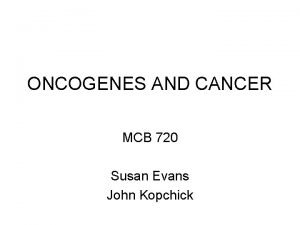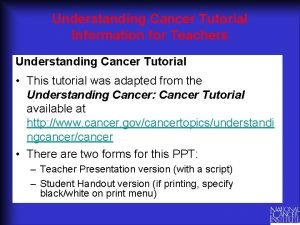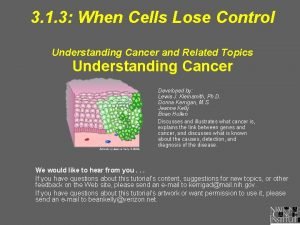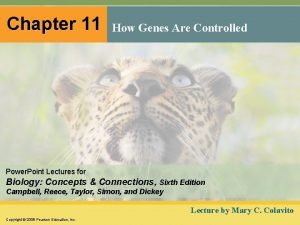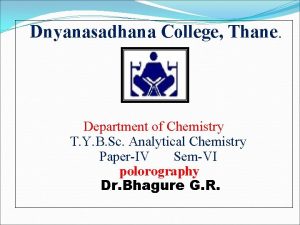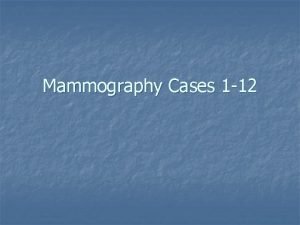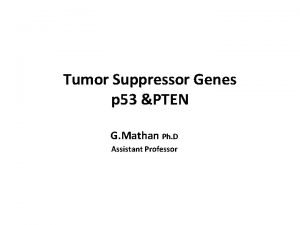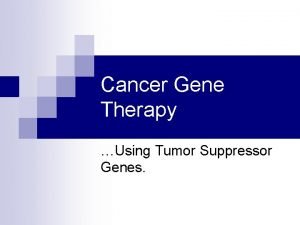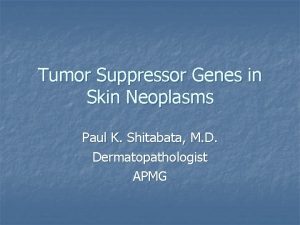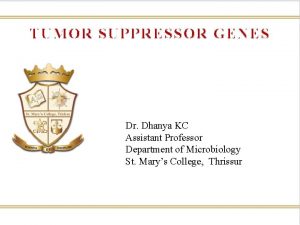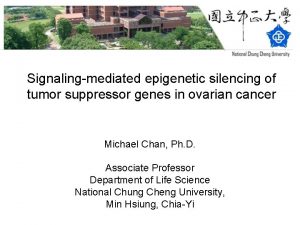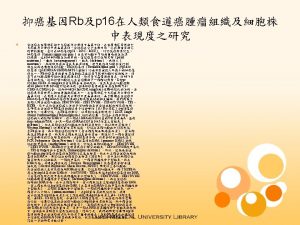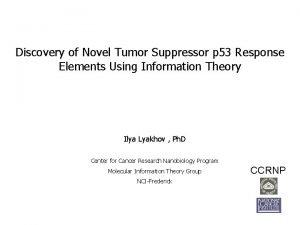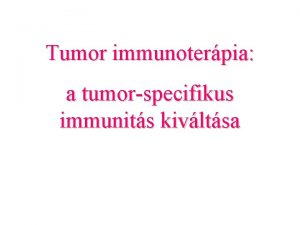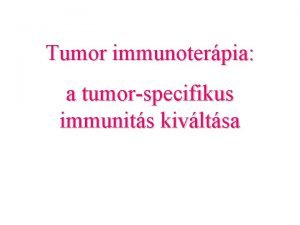Discovery of Tumor Suppressor Genes Tumor Suppressor Genes











- Slides: 11

Discovery of Tumor Suppressor Genes

Tumor Suppressor Genes • Normal genes whose absence can lead to cancer • If lost or inactivated, their functional absence can allow development of cancer

Tumor Suppressor Genes • Genes come in pairs • Predisposed • • born with one mutated gene of a pair • one defected gene will NOT lead to cancer if normal gene becomes mutated in lifetime —> cancer

Tumor Suppressor Genes • Act like a brake pedal • produce proteins that tell the cell to STOP! dividing • loss of function- cell can divide abnormally and continually

Discovery of Tumor Suppressor Genes • Alfred Knudson and the Two Hit Hypothesis (1971) • “In order for a cell to become cancerous, both of the cell’s tumor suppressor genes must be mutated”

• Retinoblastoma- childhood cancer affecting the retinas

• Retinoblasts- usually stop growing and dividing in the womb • differentiate into photoreceptors and nerve cells • do not divide • Retinoblastoma (cancer)- cells fail to differentiate • continue dividing • tumors develop • can metastasize

• Studied sample of 48 patients. Tabulated results: Bilateral (both eyes) Unilateral (one eye) Total Hereditary 25%– 30% 10%– 15% 35%– 45% 0 55%– 65% Nonhereditary Total • 25%– 30% 70%– 75% Compared age of diagnosis of bilateral and unilateral retinoblastoma 100%

• Analysis • If recessive, both genes need to be mutated for cell to be cancerous • If born with one mutated gene, child would need to acquire one additional mutated gene for cancer to form • If born with no mutated genes, child would need to acquire two mutated genes for cancer to form

• Would take MUCH longer for child to acquire two mutations rather than one, as seen in the older age of diagnosis for children not born with mutated allele. • diagnosis for bilateral occurred at younger age than unilateral

• Conclusion: • Retinoblastoma caused by double mutation on both copies of Rb (tumor suppressor gene)
